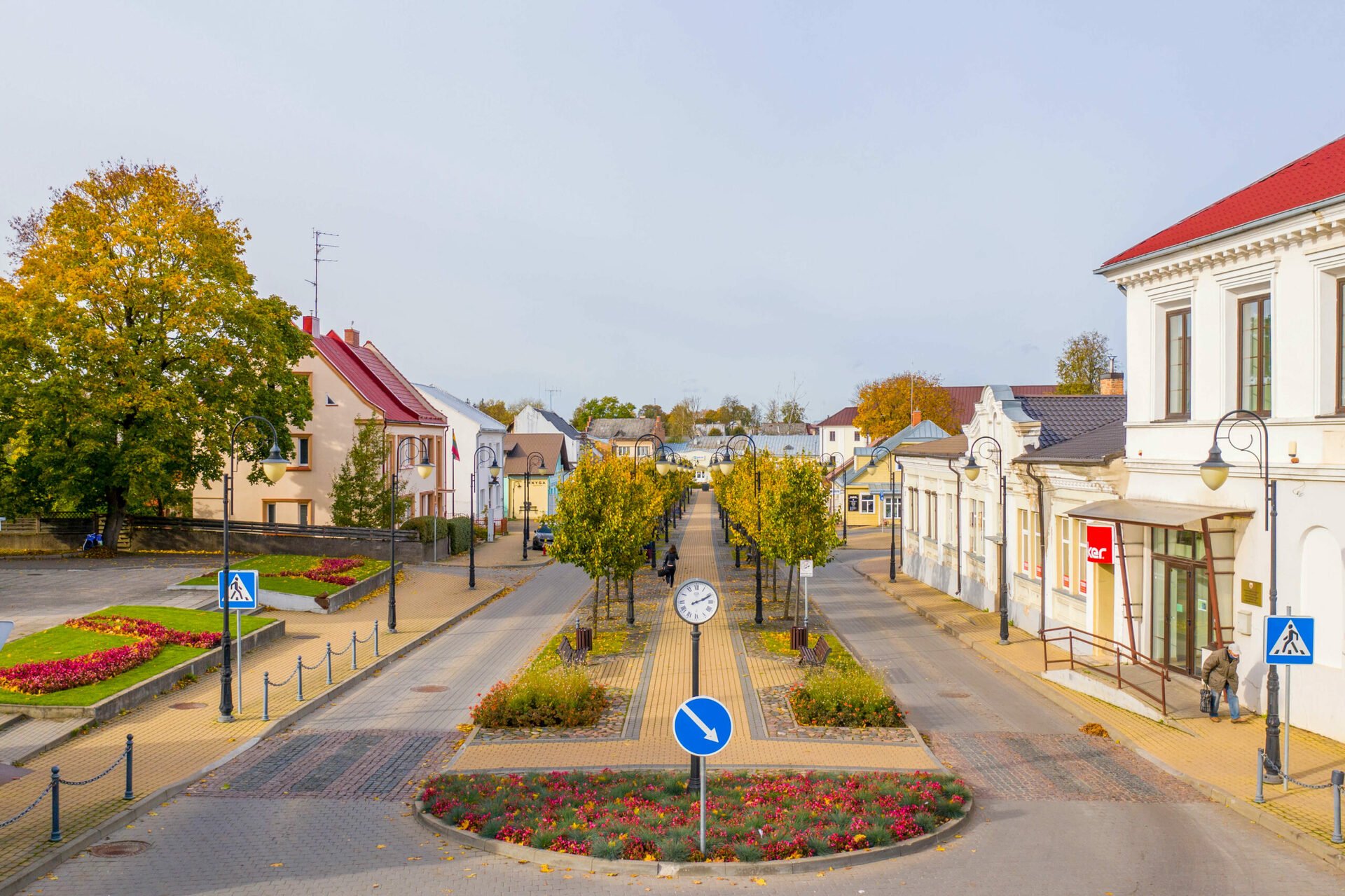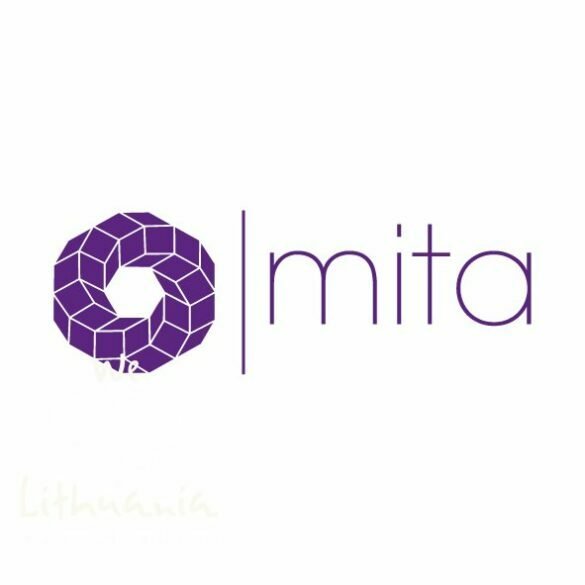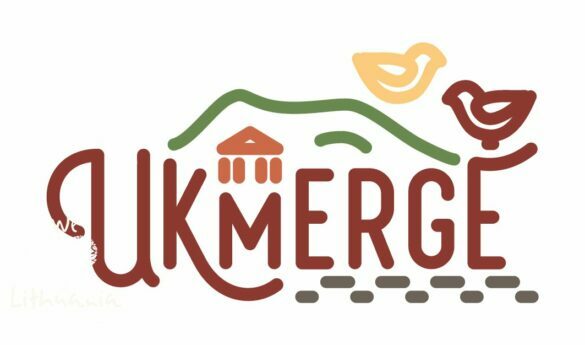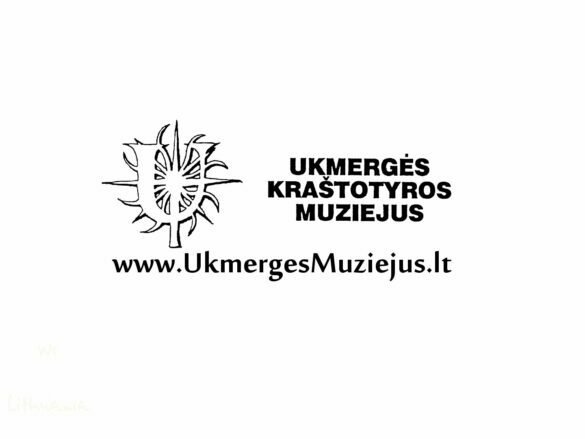The historical and cultural development of Ukmergė, one of Lithuania’s oldest towns, was greatly influenced by the Jewish community, which began to form in Lithuania in the 17th century. And although the later twists and turns of fate in Lithuania were ruthless to this people, even today in Ukmergė there are many signs of the life of what once used to be the town’s largest community.
The Jewish History of Ukmergė
The Jews were involved mainly in trade and crafts, and in the 19th century they formed the largest community in Ukmergė, a town they called Valkomir. According to the census of 1897, out of 13,532 inhabitants of the city, 7,287 of them were Jews.
The Jews in the town were an economically and politically active community. There were secular and religious Jewish schools teaching Yiddish (colloquial Jewish) and Old Hebrew. There were various societies: there was the Ukmergė branch of the Jewish sports union Maccabi, Vienybė, the Ort educational society, and the Erzo social assistance and culture society, which ran an out-patient clinic, a hospital and a pharmacy. In the first elections to the city council in 1920, out of the 36 council members, 19 were members of the Jewish community, and the merchant B. Goldberg became the city’s deputy mayor.
 A number of famous Jewish people were born in Ukmergė: the singer and inventor of the metronome Zelman Pomerancas, the famous businessman and philanthropist Chaim Frenkel, and the writers Moshe Zeifert, Israel Peipert, Maurice Tobias, Moshe Zeldov and Jakov Rubik.
A number of famous Jewish people were born in Ukmergė: the singer and inventor of the metronome Zelman Pomerancas, the famous businessman and philanthropist Chaim Frenkel, and the writers Moshe Zeifert, Israel Peipert, Maurice Tobias, Moshe Zeldov and Jakov Rubik.
The good fortune of the Jewish community of Ukmergė was tragically ruptured during the Second World War. After the Soviet Union occupied Lithuania, the richer Jews were deported; and when Lithuania was taken by the Germans, the Nazis arrested thousands of local Jews, held them in the ghetto, and massacred them brutally in Pivonia Forest. The Jewish community of Ukmergė had ceased to exist by the end of the war. Today it consists of only a few dozen people. In 1961, the Soviet authorities destroyed the Jewish cemetery, the last sign of the formerly flourishing Jewish life in Ukmergė. All that is left of the community is several commemorative sites and memorial plaques on former Jewish houses of worship, although most of the Jewish-owned buildings in the town centre (Kęstučio Avenue, Vienuolyno Street, Gedimino Street, Žuvų Street, Vasario 16-osios Street) are still standing
The Jewish heritage and memorial symbols in Ukmergė today
It is possible to learn about the Jewish heritage and history of Ukmergė by visiting surviving places of importance to the community, and places where, sadly, there are symbols of remembrance.
The old Jewish cemetery (at the intersection of Vilniaus Street and Linų Street) opened in the 17th or the early 18th century, outside the limits of the town at the time. It was tended and burials were conducted by the voluntary Funeral Brotherhood (Chevro Kadish). The Jewish cemetery was extended towards the southeast along Vilniaus Street in 1892. A funeral parlour (now a house) stood in the northern corner, where the deceased were washed and dressed. Like other commemorative sites, the old Jewish cemetery was destroyed by the Soviet authorities. A monument was erected on the site in 1961.
Mikvah (at the intersection of Pirties Street and Utenos Street). The ‘Sanitary Description of the Cities of Kaunas Province’ in 1890 mentions a sauna belonging to the Jewish community, in the women’s section of which there was a mikvah, a small swimming pool. After the synagogue and the cemetery, this was one of the main features of the religious life of the traditional Jewish community. The mikvah was used mainly by Jewish men; Jewish women could use a mikvah after menstruation and childbirth. This pool of water, which has to be supplied from natural bodies of water, is inseparable from the ritual of the conversion to Judaism (giur), the washing of new dishes before the use of clean (kosher) food, etc. Immersion in a mikvah is associated with purification, purity and cleanliness.
The former Jewish hospital (Vytauto Street 75A). Several wealthy Jews founded the Hospital Brotherhood in 1825, which established a hospital, a pharmacy, a sauna, a slaughterhouse and a meat market. Profits from these institutions were used to support the hospital. The Jewish community of Ukmergė also contributed financially to maintaining the hospital, by allocating 630 silver roubles a year. A new brick Jewish hospital and auxiliary buildings were built between 1893 and 1895. In 1919, the new city council took over the maintenance of the hospital. It was returned to the Jewish community of Ukmergė in 1921, but all the patients in the city and its area, whose treatment was paid for by the municipality, were placed in it. The Erzo charity took care of the maintenance of the Jewish hospital right up to the Soviet occupation. In March 1941, the hospital was nationalised.
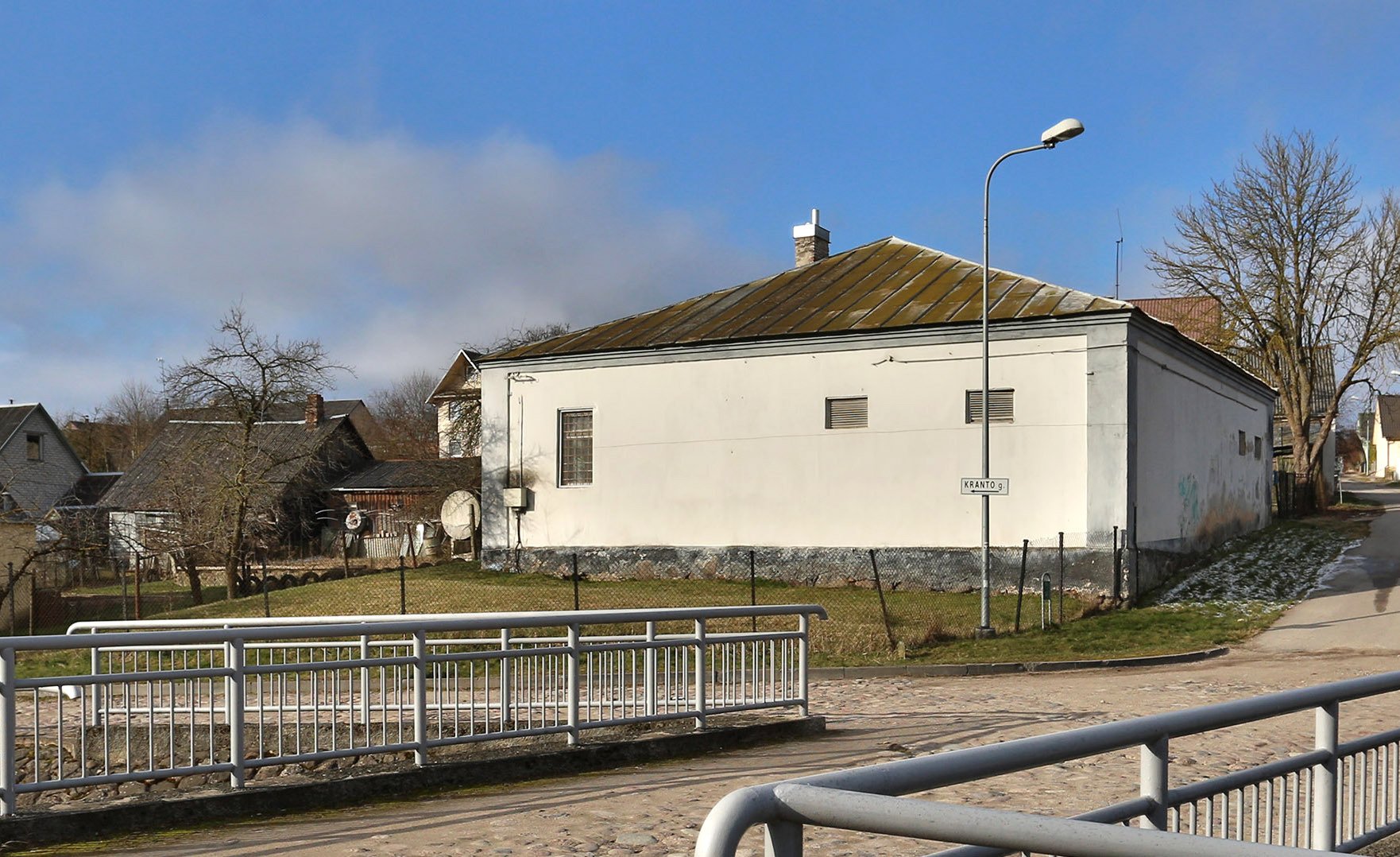 Former Egyptian House of Prayer (Vilkmergėlės Street 13). In 1889, Jews were allowed to build a brick Egyptian house of worship in Ukmergė on the current Vilkmergėlės Street, which was then known as Egypt Street. During the Soviet era and after the restoration of independence, the building was used as a workshop: it housed a button factory, and now houses carpentry workshops.
Former Egyptian House of Prayer (Vilkmergėlės Street 13). In 1889, Jews were allowed to build a brick Egyptian house of worship in Ukmergė on the current Vilkmergėlės Street, which was then known as Egypt Street. During the Soviet era and after the restoration of independence, the building was used as a workshop: it housed a button factory, and now houses carpentry workshops.
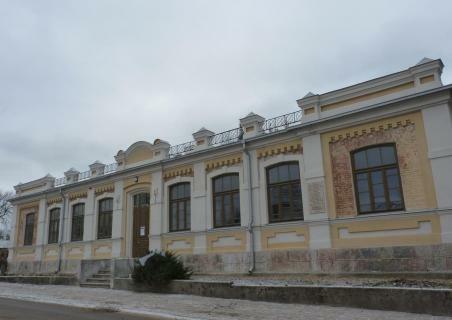
The Talmud Tora Primary School (Vasario 16-osios Street 11) opened around 1886, but the school building was only built in 1898. Its construction was sponsored by the Šiauliai factory owner Chaimas Frenkelis, who was born in Ukmergė. The school was maintained by various Zionist organisations, but it later passed into the hands of the municipality, and became the third primary school of the town. Until the Second World War, boys from poor Jewish families would study there. The Soviet government nationalised the school after the war. The Ukmergė Art School operated there until 2009, and in 2019 the Tolerance Centre, which also houses the Jewish community of the Ukmergė district, started operating in the building.

The Rozenblum Jewish Orphanage (Vasario 16-osios Street 15) was founded around 1922, at the expense and initiative of the Rosenblum family of wealthy American Jews. Part of the building was remodelled into a hall with a stage in 1926. A cinema opened in it in 1927, the profits from which were intended for the maintenance of Jewish orphanages. The maintenance of the institution was looked after by the Society of Jewish Orphanages, named after Rosenblum. Some funding came to the orphanage from the United States, some was donated by the municipality, and some was donated by the Jewish community. Children from the age of six were admitted to the Rosenblum Jewish Orphanage, where they stayed until the age of 14. Children who still had their parents were also accepted, in exceptional cases. About 40 children lived permanently in the home, and another 15 children lived with families. In August 1940, the premises of the Rosenblum Jewish Orphanage Society was confiscated by the Soviet authorities, and the orphanage was nationalised.
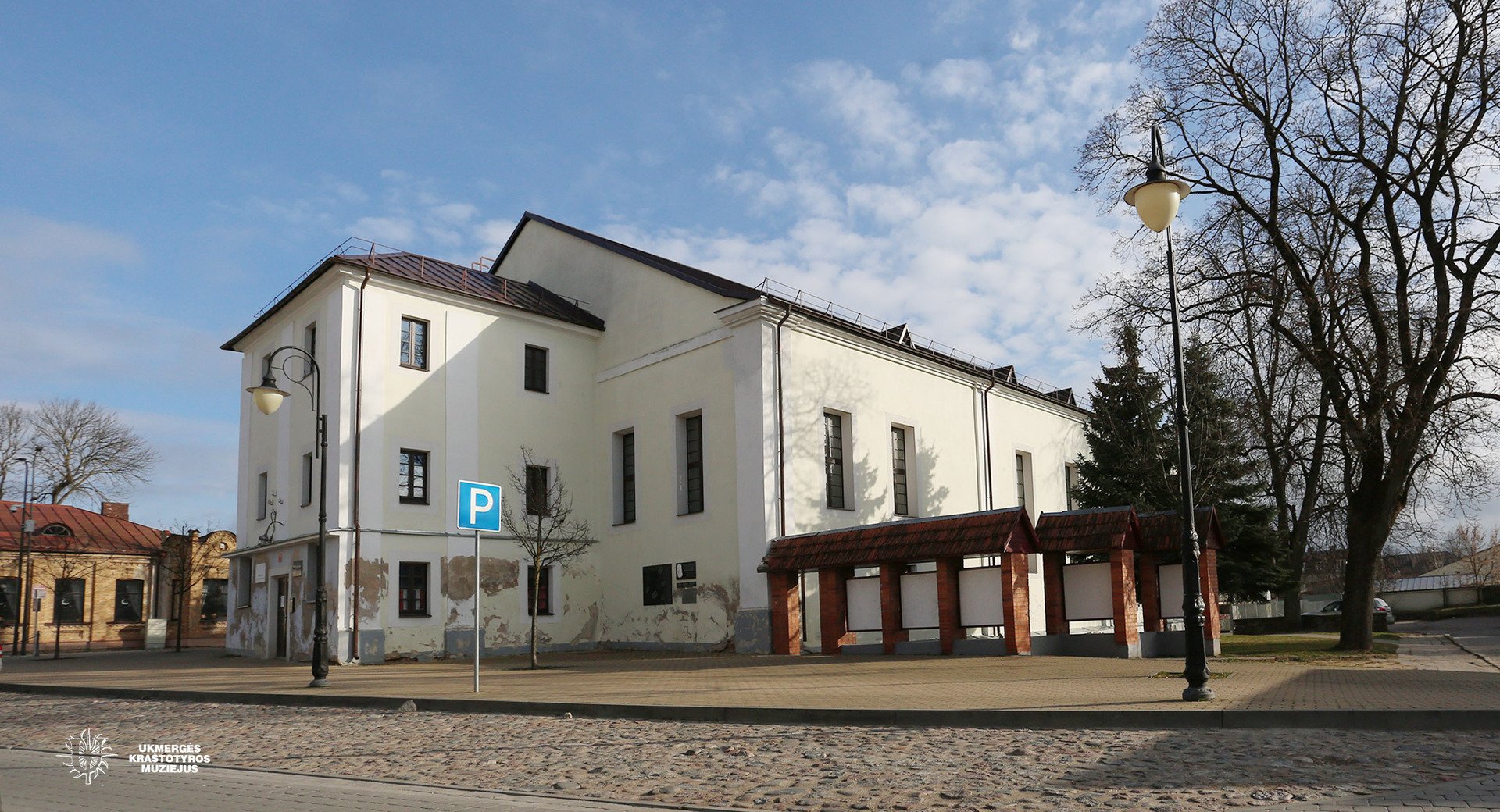 The Great Synagogue (Vienuolyno Street 2) is the spiritual, cultural, economic and political centre of the Jewish community in Ukmergė. It served several roles: as a place of worship, a place for community meetings, and a venue for Talmudic studies, and sometimes the headquarters of the Kahal. It is believed that there was already a kahal and a synagogue in Ukmergė in the 17th century. However, the first specific mention of the synagogue can be found in documents from 1721. It is thought to have burnt down in a fire in the city in 1787, but it was rebuilt. The remodelling of the Great Synagogue began in 1851, during which it was enlarged, to become a brick building with a rectangular plan, the decoration of which combined elements of Baroque and Classicism. The Great Synagogue burned down in a fire in 1877, but it was rebuilt without any change to the exterior; only the burnt interior was changed. The synagogue ceased to exist in 1941. A sports school (now Ukmergė Sports Centre) was established in the building of the Great Synagogue in around 1953.
The Great Synagogue (Vienuolyno Street 2) is the spiritual, cultural, economic and political centre of the Jewish community in Ukmergė. It served several roles: as a place of worship, a place for community meetings, and a venue for Talmudic studies, and sometimes the headquarters of the Kahal. It is believed that there was already a kahal and a synagogue in Ukmergė in the 17th century. However, the first specific mention of the synagogue can be found in documents from 1721. It is thought to have burnt down in a fire in the city in 1787, but it was rebuilt. The remodelling of the Great Synagogue began in 1851, during which it was enlarged, to become a brick building with a rectangular plan, the decoration of which combined elements of Baroque and Classicism. The Great Synagogue burned down in a fire in 1877, but it was rebuilt without any change to the exterior; only the burnt interior was changed. The synagogue ceased to exist in 1941. A sports school (now Ukmergė Sports Centre) was established in the building of the Great Synagogue in around 1953.
Former Jewish Street. There used to be a famous fish market in this place, and in the interwar period there were rows of merchants’ houses, various shops and workshops of simple wooden construction. The Chaja Galaitė-Oguzienė store was located in the building at Žuvų Street 7, which is witnessed by an inscription that has survived to this day on the wall of the building. The Jewish Šapirienė store selling ‘colonial’ goods was at Žuvų Street 3, the Jewish religious community of Ukmergė was located at Žuvų Street 9, and until the fire of 1904, a synagogue also stood right next to the square.
Memorial stones to J. Zusmanovičius and M. Levi. Two memorial stones have been placed in the pavements near buildings associated with famous personalities in order to commemorate victims of the Holocaust. One of these stones, dedicated to the memory of the interwar photographer Mauša Levi, is in the pavement at Kauno Street 22; the other is by the Great Synagogue (now Ukmergė Sports Centre), and is dedicated to the memory of the last rabbi of Ukmergė, Josef Zusmanovičius. We have little information about Rabbi J. Zusmanovičius. It is known that he did not abandon his duties before he died: he was killed together with his family in Pivonia Forest. Mauša Levi, who had a photography studio in Ukmergė, also died in the same forest, leaving behind a large number of photographs of the city and its inhabitants.

The site of the massacre of the Jews is about one kilometre into Pivonia Forest, after the turning to Pašilė on the old road to Vilnius. In this place, between 1 August and 26 September 1941, the Nazis and their local helpers killed about 7,000 Jews from Ukmergė and the surrounding area: men, women and children … A monument was erected here in memory of the victims in 1953.
An opportunity to learn about and experience Jewish culture in Ukmergė
You can learn more about Jewish life in Ukmergė and its area from the permanent exhibition in the Ukmergė Museum of Local Lore, as well as by booking a guided tour. During the tour, it is possible to see some of the objects of the Jewish cultural heritage ‘live’, and, according to the guide, to see the development of the city through the prism of historical events, the cultural heritage, and the personalities that formed the city’s identity.
You can explore Jewish Ukmergė on your own by downloading the mobile app Discover Jewish Lithuania.
After the tour, in order to build on your impressions, we recommend you experience the intangible Jewish heritage, and taste traditional Jewish dishes, such as shaksha, humus, falafel, forsmak, imberlach and others, in the Big Stone restaurant in the Old Town of Ukmergė.
The article is part of the project “Promotion of innovative tourism in Ukmergė by improving the skills of employees and online marketing service systems.” The project is implemented with funding from the Agency for Science, Innovation, and Technology.
